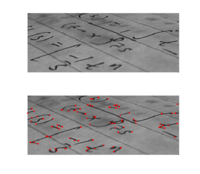
Photo from wikipedia
Small-object detection and avoidance in unknown environments is a significant challenge to overcome for small autonomous vehicles that are generally highly agile and restricted in payload and computational processing power.… Click to show full abstract
Small-object detection and avoidance in unknown environments is a significant challenge to overcome for small autonomous vehicles that are generally highly agile and restricted in payload and computational processing power. Typical machine-vision and range measurement-based solutions suffer either from restricted fields-of-view or significant computational complexity and are, hence, not easily portable to small platforms. In order to overcome these drawbacks, in this paper, two novel bioinspired approaches are proposed to extract information about small-field objects contained in planar optic flow. The first approach, which is analogous to the small-field extraction process hypothesized to occur in the lobula plate of the fly visual system, is based on the Fourier residual analysis of instantaneous optic flow. Alternatively, the flow-of-flow method is the engineering analogue of the small-field extraction process thought to occur in the fruit-fly's medulla, and extracts high-frequency content of optic flow by means of an elementary motion detector array. Both approaches extract instantaneous relative range and bearing of small-field obstacles from planar optic flow in a local environment characterized by small and wide-field obstacles, which is then combined with an artificial potential function-based low-order steering control law. The proposed sensing and control scheme is experimentally validated with a quadrotor vehicle that is able to effectively navigate an unknown environment laden with small-field clutter. This bioinspired approach is computationally efficient, which renders extraction of vehicle velocity and local environment structure superfluous, and thus, serves as a robust, reflexive solution to the problem of small-object detection, and avoidance for small autonomous robots.
Journal Title: IEEE Transactions on Robotics
Year Published: 2019
Link to full text (if available)
Share on Social Media: Sign Up to like & get
recommendations!